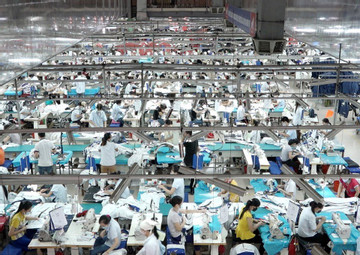- © Copyright of Vietnamnet Global.
- Tel: 024 3772 7988 Fax: (024) 37722734
- Email: [email protected]
administrative reform
Update news administrative reform
VCCI report finds problems in administrative reform
“Flow of business law in 2021”, a report of the Vietnam Chamber of Commerce and Industry, shows that hundreds of circulars that guide the implementation of laws are issued each year. The quality and transparency of the documents are in question.
Regulations hindering enterprise development have been revived
Business environment reform has been slowing down over the last two years. Some bad regulations that were removed because they hindered the development of enterprises have been revived.
Merger of districts and communes to save VND2 trillion
The number of civil servants at the district level has been reduced by 706 out of 2,411, while the number of cadres and civil servants at the commune level has been cut by 9,694 out of 20,403 under the program on district and commune mergers.
Staff cutback plan fulfilled in 2021
The task on state apparatus streamlining set by the Politburo was fulfilled in 2021 for the first time. More than 10 percent of civil servant personnel and 11.67 percent of public employees at non-business public units have been cut.
PM requests reduction in number of departments, general departments
Noting that the apparatus inside ministries and branches is still cumbersome and hierarchical, Prime Minister Pham Minh Chinh has asked ministers to restructure departments and general departments.
Ministry: 7 departments and branches cut, 10 percent of civil servant staff reduced
In 2021, there were a total of 1,173 departments and branches, which means seven departments and branches were cut. Around 10 percent of the number of civil servants and 11.67 percent of public employees were reduced.
Vietnam needs to cure ‘stagnation disease’ to 'take off'
Prime Minister Pham Minh Chinh, after taking office, has been paying high attention to fostering the public apparatus’ proper implementation of their functions and tasks, especially the fulfillment of the great responsibilities assigned to them.
21 ward leaders in Hanoi to leave jobs when urban admin model starts
Hanoi has proposed an allowance equal to 3-month salary for 21 ward leaders who will have to leave when the city officially applies the pilot urban administration model.
Number of civil servants to increase by over 7,000 in 2022
The total number of civil servants who are paid by the state budget in 2022 will be 256,685, an increase of 7,035 people compared to 2021.
National Assembly to supervise merger of districts and communes in 45 provinces
The supervisory team of the National Assembly Standing Committee will supervise the arrangement and consolidation of the organizational apparatus and of personnel, after the merger of districts and communes in 45 provinces and cities.
‘Stagnation disease’: staff planning also a factor
As mentioned in Part 1, stagnation has taken root in many fields, and personnel work, especially cadre planning and rotation, is no exception.
Minister of Home Affairs: state apparatus is too cumbersome
Minister of Home Affairs Pham Thi Thanh Tra says that the state apparatus is overly cumbersome with too many levels of hierarchy and an overlapping structure in ministries and ministerial-level agencies.
Vietnam kicks off online residence registration
It aims to ease the administrative burden in the country.
The 'pain' of administrative procedures
If public agencies consider the work of people and businesses as their own, the number of complaints about administrative procedures will decrease.
Reform of Government apparatus
The Ministry of Home Affairs has proposed reducing the number of ministries and ministerial-level agencies from 22 at present to 16-18 by 2030; and to promote digital transformation and the digital government.
State apparatus and demands from life
Improving the state apparatus is an objective requirement that needs to be resolved soon.
Administrative ATMs: great step forward in reforming the state apparatus
In early March, the People's Committee of District 6 in HCM City put into use the first automatic administrative document receipt and return machine, dubbed administrative ATM, in Vietnam.
It is time to reform the state administrative apparatus
Reforming the state administrative apparatus is a national policy which has been noted in resolutions of all eight national congresses of the Communist Party of Vietnam during the 35 years of Doi Moi (reform).
Further administrative reform needed
Vietnamese people and businesses are still struggling with administrative procedures and are being held back by an unstable business environment.
Administrative reform saves VND6.3 trillion each year
Administrative reform has been thoroughly implemented at all levels and helped save more than 18 million working days each year, equivalent to over VND6.3 trillion ($274.32 million) of social expenditure, Deputy PM Truong Hoa Binh has said.



















